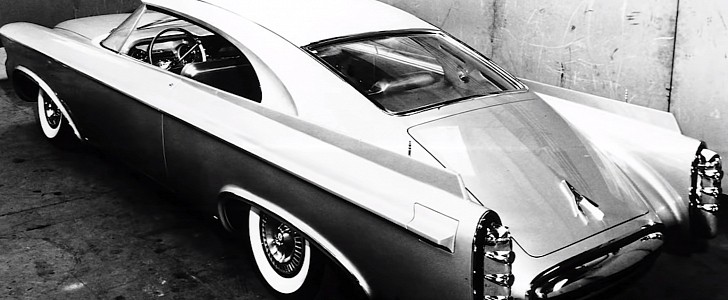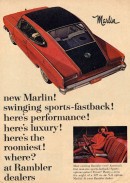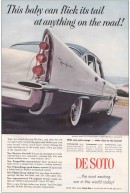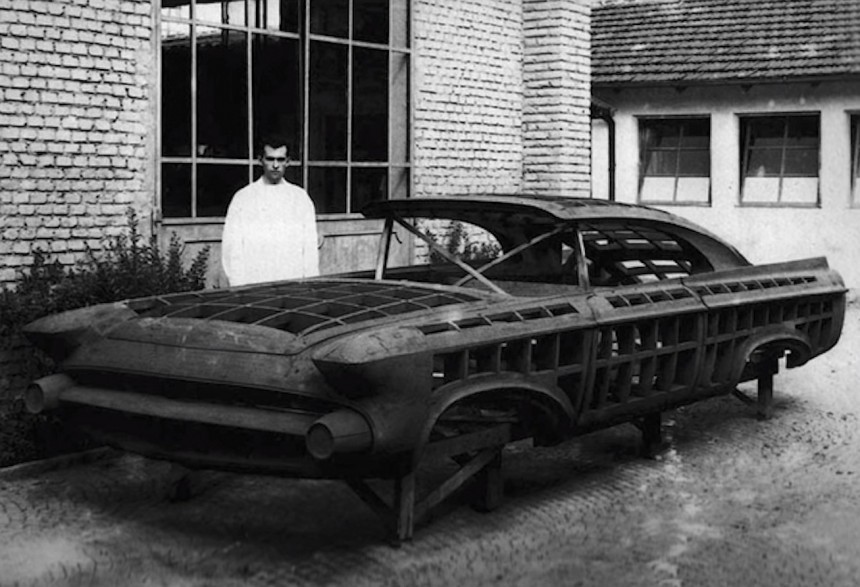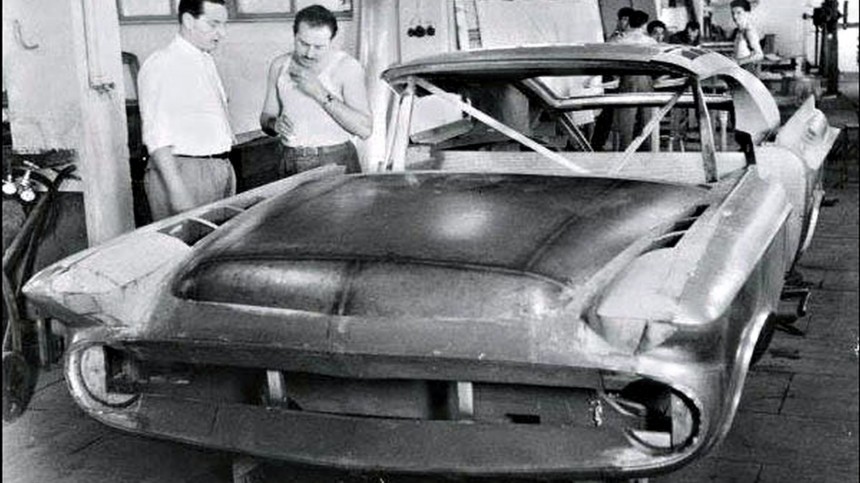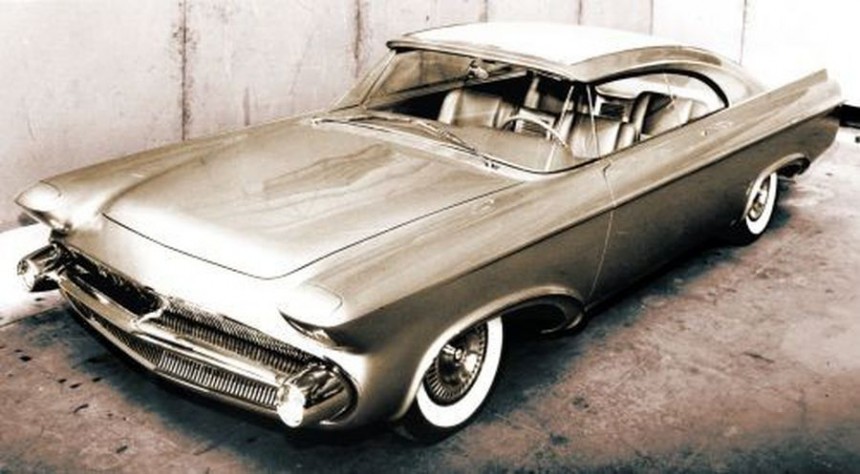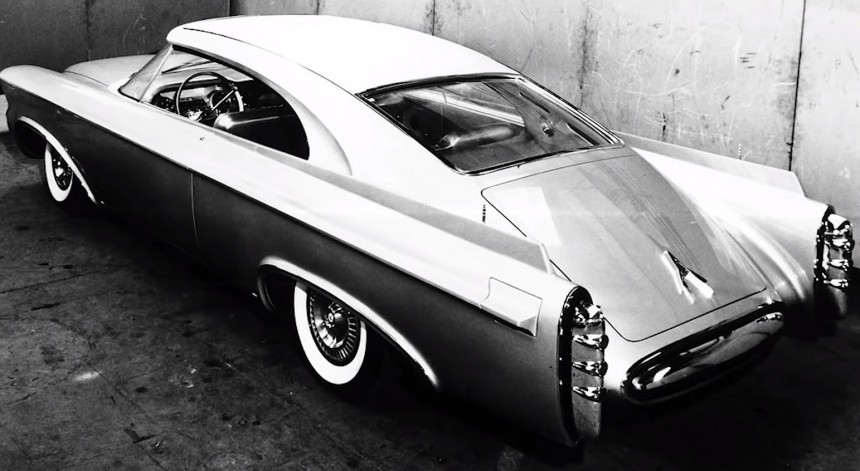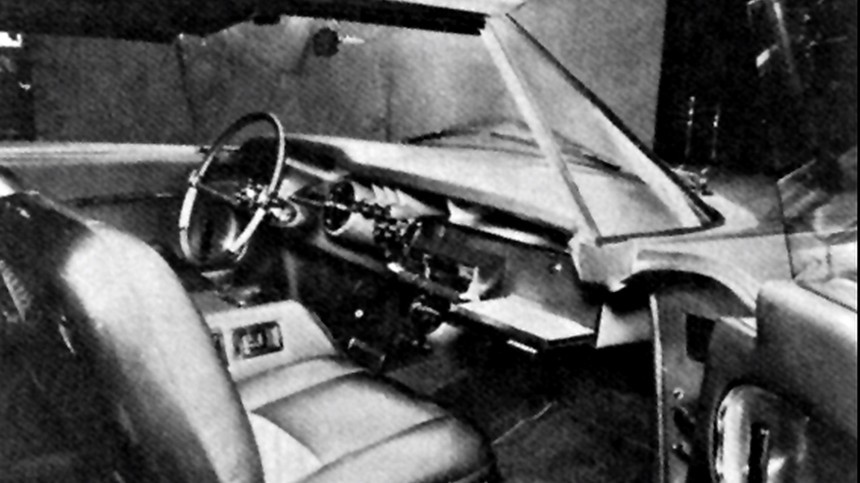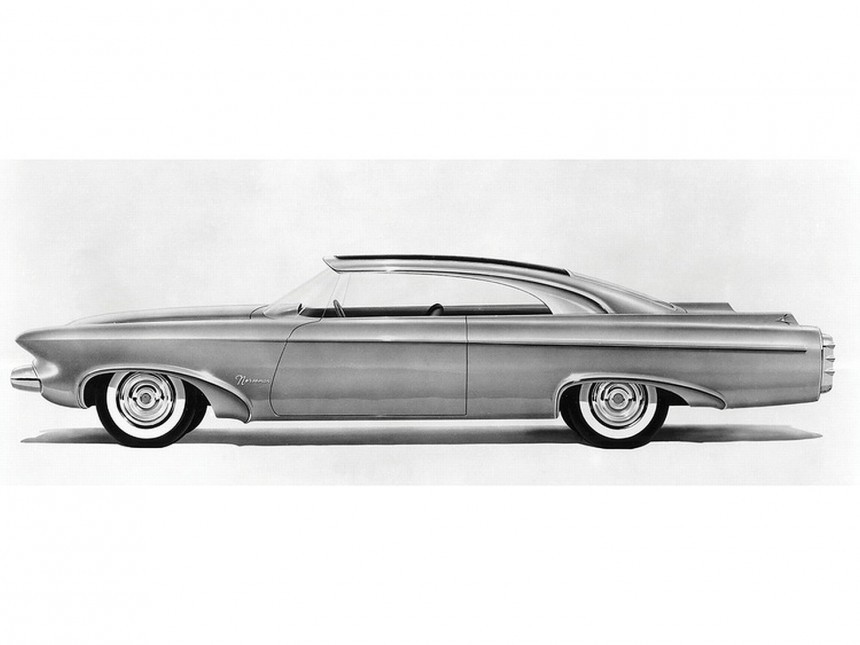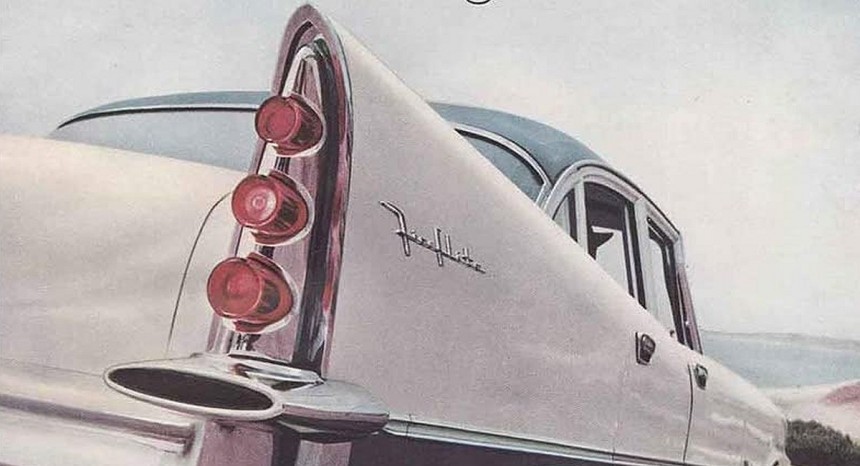From the 1938 Buick Y-Job to the 2003 Cadillac Sixteen, Detroit has produced some of the most spectacular concept cars out there. But there's at least one innovative show car that we never got to see. I'm talking about the 1956 Chrysler Norseman, which has been sleeping with the fishes at the bottom of the Atlantic for 65 years as of 2021.
Known as the "the dream car at the bottom of the Atlantic," the Norseman, a concept car that Chrysler was planning to tour across the U.S. in 1957, sank with the ill-fated SS Andrea Doria while being shipped from Italy to New York.
Only a few people got to see the concept car in the metal. It's described as the most innovative vehicle of its time and it sported a beautiful body designed and built by Carrozzeria Ghia. Often forgotten due to its short life, the Norseman deserves a closer a look.
That's when Virgil Exner stepped in to design a new generation of vehicles. Exner focused mostly on aerodynamics and his work led to birth of the iconic Chrysler 300 series. It debuted in 1955 and by 1957 it brought Chrysler at the forefront of automotive design.
He is also responsible for creating the first cars with rear fins as a central design element and created a strong alliance between Chrysler and Italian coach-builder Carrozzeria Ghia. The collaboration spawned a handful of production and concept vehicles in the 1950s.
The Norseman was one of them. First penned in late 1953, the Norseman was handed over to Ghia, which turned Exner ideas into reality. The Italian shop reportedly spent nearly 50,000 man hours and about $200,000 to design and build the Norseman from engineering drawings. It took Ghia around 15 months to complete the car, which was ready to be shipped to the U.S. in July 1956.
The chassis, which featured a 129-inch (3,276-mm) wheelbase (three inches longer than the 300), had a full belly pan to reduce resistance under the car. Neither feature was common at the time.
The exterior of the Norseman was actually quite radical compared to production cars of the era. It featured a sharply sloped nose and hidden headlamps. The latter were masked by clamshell covers that were sharp at the top. The grille, which stretched from one corner to the other, was much slimmer than production cars of the day. It was also flanked by pod-mounted lights.
The rear was highlighted by big fins that resembled previous Chryslers built by Ghia. But unlike other designs of the time, they ended abruptly into stacked taillights. The rear fascia itself was very thin, mostly due to the heavily raked trunklid.
But the cantilevered roof was by far its most innovative feature. In layman's terms, the Norseman didn't have A- and B-pillars. The roof rested on the front windshield, which was built by legendary glassmaker PPG. It was heat-treated and shatterproof and it was attached under tension with threaded steel rods.
Chrysler claimed that the roof could support eight times the weight of the car in the even of a roll-over crash, but this theory was never tested. The rear window was larger than usual at 12 square feet ad it could be retracted forward into the roof via an electric motor.
While most cars of the era were fitted with bench seats, the Norseman packed four individual buckets, separated by front and rear consoles. The integrated seat belts and the luminescent paint applied to the backsides for the front seats was innovative at the time. The passenger-side dashboard included a folding writing desk in the glovebox.
The concept was reportedly fitted with a 5.4-liter, Hemi V8 engine good for 235 horsepower paired to a Powerflite automatic transmission.
What was supposed to be smooth trip turned into a tragedy on the foggy night of July 25, when Andrea Doria collided with another passenger ship, the Stockholm. The crash was too much for the Andrea Doria to handle and the ship sank. Of the 1,706 passengers on board, 51 died.
The rescue was one of the largest in maritime history, but the Andrea Doria took painting, sculptures, and the Chrysler Norseman with it to the bottom of the ocean.
The Norseman was eventually discovered in 1994 by diver and explorer David Bright. He spotted the vehicle while looking for a lost diver. He reported that the car was in very poor condition due to decades of water exposure. He identified it only because the tires and the hubcaps were still in one piece. The Norseman was never recovered and will spend the rest of its life as a pile of indistinguishable junk.
With the Norseman on the bottom of the ocean, Chrysler engineers and designers began looking at the blueprints in an attempt to incorporate some of the features into other designs.
The unique roof didn't make it into other cars, most likely because Chrysler discovered it wasn't as strong as it had anticipated. The stacked taillights were eventually used on the 1957 DeSoto. The shapes of the nose and the headlamps were also reminiscent of the Norseman.
Almost 10 years later, American Motors Corporation (AMC) introduced the 1965 Rambler Marlin with a sloping roof and trunklid section that looked a lot like the Norseman. The car was designed by Dick Teague, who worked for Chrysler during the mid-1950s.
The same roof design was adopted for the Dodge Charger II concept in 1965 and the first-generation Charger in 1966.
Only a few people got to see the concept car in the metal. It's described as the most innovative vehicle of its time and it sported a beautiful body designed and built by Carrozzeria Ghia. Often forgotten due to its short life, the Norseman deserves a closer a look.
The context
Finished in 1956, the Norseman took almost three years to see the light of day. Conceived during Chrysler's "forward look" era, the Norseman was supposed to help revamp the brand. Chrysler wasn't doing bad in the early 1950s, but its designs were dated and sales fell behind Detroit-based rivals Ford and General Motors.He is also responsible for creating the first cars with rear fins as a central design element and created a strong alliance between Chrysler and Italian coach-builder Carrozzeria Ghia. The collaboration spawned a handful of production and concept vehicles in the 1950s.
The Norseman was one of them. First penned in late 1953, the Norseman was handed over to Ghia, which turned Exner ideas into reality. The Italian shop reportedly spent nearly 50,000 man hours and about $200,000 to design and build the Norseman from engineering drawings. It took Ghia around 15 months to complete the car, which was ready to be shipped to the U.S. in July 1956.
Was the Norseman an innovative car?
Because the Norseman project was known to just a few people, there isn't a lot of info about it out there. Ghia reportedly started out with a modified Chrysler 300 chassis and fitted an advanced suspension system that included front torsion bars and rear leaf springs.The chassis, which featured a 129-inch (3,276-mm) wheelbase (three inches longer than the 300), had a full belly pan to reduce resistance under the car. Neither feature was common at the time.
The exterior of the Norseman was actually quite radical compared to production cars of the era. It featured a sharply sloped nose and hidden headlamps. The latter were masked by clamshell covers that were sharp at the top. The grille, which stretched from one corner to the other, was much slimmer than production cars of the day. It was also flanked by pod-mounted lights.
But the cantilevered roof was by far its most innovative feature. In layman's terms, the Norseman didn't have A- and B-pillars. The roof rested on the front windshield, which was built by legendary glassmaker PPG. It was heat-treated and shatterproof and it was attached under tension with threaded steel rods.
Chrysler claimed that the roof could support eight times the weight of the car in the even of a roll-over crash, but this theory was never tested. The rear window was larger than usual at 12 square feet ad it could be retracted forward into the roof via an electric motor.
The concept was reportedly fitted with a 5.4-liter, Hemi V8 engine good for 235 horsepower paired to a Powerflite automatic transmission.
What was it doing on the SS Andrea Doria?
Put together in Turin, the Norseman was shipped to Genoa in mid-July of 1956, where it was supposed to be loaded on a boat to New York. But the car arrived later than planned and missed its intended shipment date. As a result, it was put on the next available ship, the SS Andrea Doria. A Trans-Atlantic ocean liner, the Andrea Doria was going on its 101st trip across the pond.The rescue was one of the largest in maritime history, but the Andrea Doria took painting, sculptures, and the Chrysler Norseman with it to the bottom of the ocean.
Was it recovered?
The sinking site quickly became a popular diving place for amateurs, but it wasn't until the 1990s that someone tried to recover the fortunes that remained on the ship. New Jersey diver John Moyer bought the salvage rights to the Andrea Doria and took more than 100 dives to the wreck site, but he never found the car.Did Chrysler use Norseman features on other cars?
The news was obviously disappointing for Chrysler. Not only it lost more than two years of work and about $200,000, but it also lost its main auto show exhibit for 1957. Virgil Exner had been recuperating from a heart attack the day of the sinking, so his family wisely decided to wait a while before breaking the news. Needless to say, Exner wasn't happy.With the Norseman on the bottom of the ocean, Chrysler engineers and designers began looking at the blueprints in an attempt to incorporate some of the features into other designs.
Almost 10 years later, American Motors Corporation (AMC) introduced the 1965 Rambler Marlin with a sloping roof and trunklid section that looked a lot like the Norseman. The car was designed by Dick Teague, who worked for Chrysler during the mid-1950s.
The same roof design was adopted for the Dodge Charger II concept in 1965 and the first-generation Charger in 1966.
